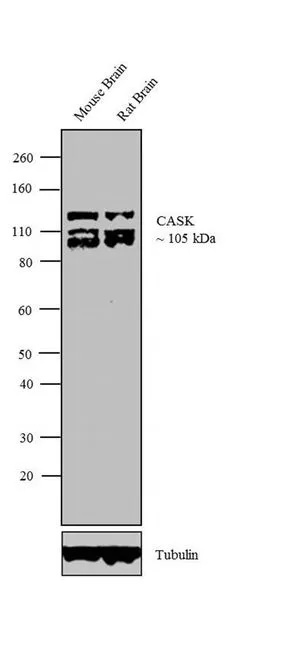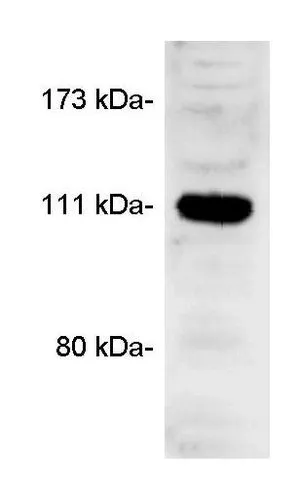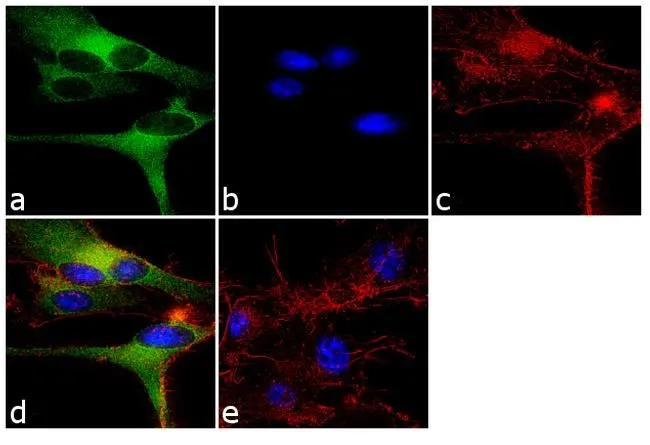
WB analysis of tissue extracts (30 microg lysate) of Mouse Brain (Lane 1) and Rat Brain (Lane 2) using GTX23383 CASK antibody. Dilution : 0.5-2 microg/ml
CASK antibody
GTX23383
ApplicationsFlow Cytometry, ImmunoFluorescence, Western Blot, ImmunoCytoChemistry, ImmunoHistoChemistry
Product group Antibodies
ReactivityHuman, Mouse, Rat
TargetCask
Overview
- SupplierGeneTex
- Product NameCASK antibody
- Delivery Days Customer9
- Application Supplier NoteWB: 0.5-2 microg/ml. ICC/IF: 2 microg/mL. FACS: 3-5 microg/106 cells. *Optimal dilutions/concentrations should be determined by the researcher.Not tested in other applications.
- ApplicationsFlow Cytometry, ImmunoFluorescence, Western Blot, ImmunoCytoChemistry, ImmunoHistoChemistry
- CertificationResearch Use Only
- ClonalityPolyclonal
- Concentration1 mg/ml
- ConjugateUnconjugated
- Gene ID12361
- Target nameCask
- Target descriptioncalcium/calmodulin dependent serine protein kinase
- Target synonymsDXPri1, DXRib1, LIN-2, Pals3, mLin-2, peripheral plasma membrane protein CASK, calcium/calmodulin-dependent serine protein kinase (MAGUK family)
- HostRabbit
- IsotypeIgG
- Protein IDO70589
- Protein NamePeripheral plasma membrane protein CASK
- Scientific DescriptionCalmodulin sensitive kinase (CASK/mLIN-2) is a ~112-kDa member of the membrane associated quanylate kinase (MAGUK) protein family with multiple protein binding domains. These include an N-terminal calmodulin kinase (CaMKII) domain and C-terminal PDZ, SH3-, and quanylate kinase domains. CASK possesses both tyrosine kinase and serine/threonine kinase activity. In addition, CASK can form a heterotrimeric complex with Mint (X11or mLIN-10) and Veli (mLIN-7) proteins which is predicted to participate in plasma membrane receptor localization. CASK is localized to neuronal synapses and also interacts with syndecan and neurexin. The guanylate kinase domain of CASK has been shown to interact with the T-box transcription factor, Tbr-1, as a coactivator to induce transcription of genes that contain T-elements.
- ReactivityHuman, Mouse, Rat
- Storage Instruction-20°C or -80°C,2°C to 8°C
- UNSPSC12352203


